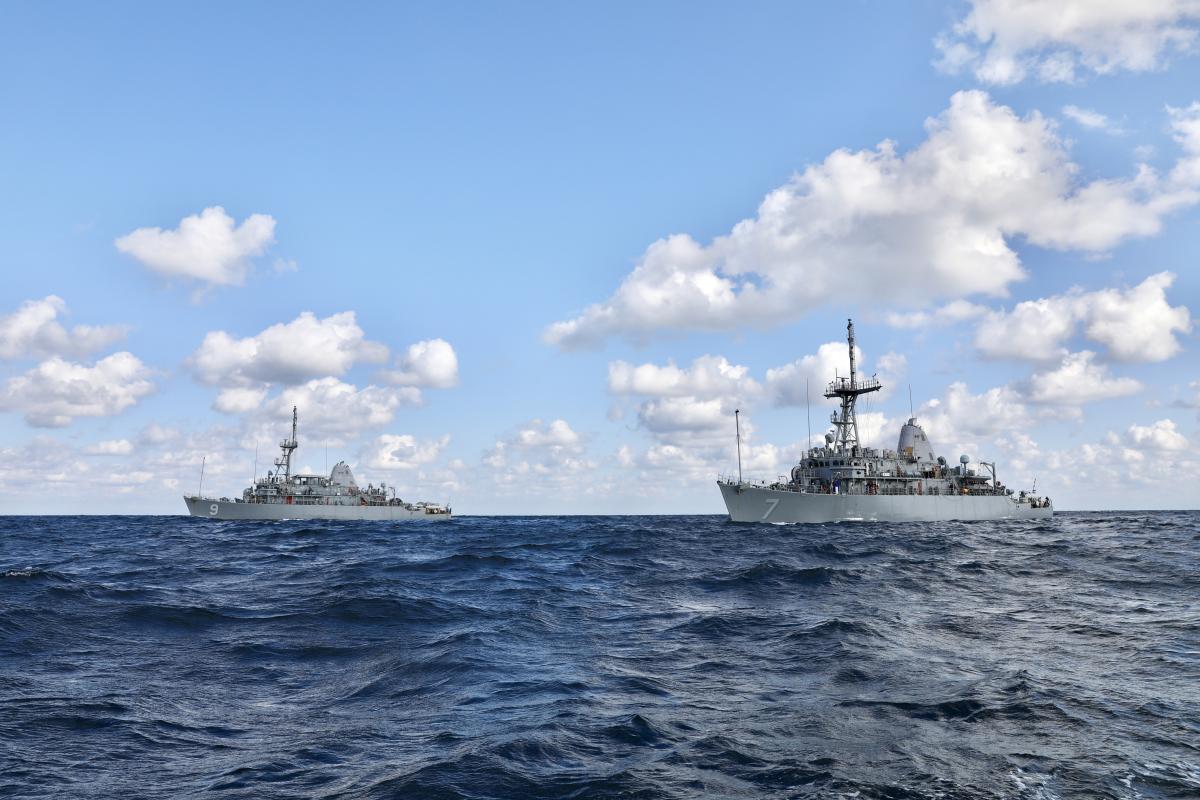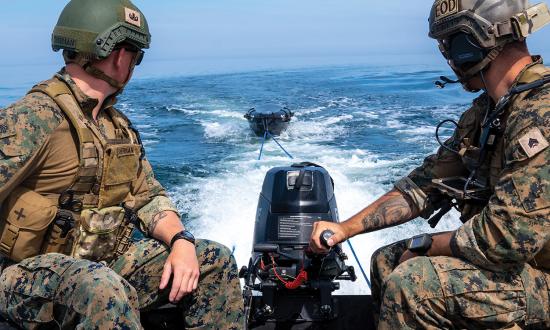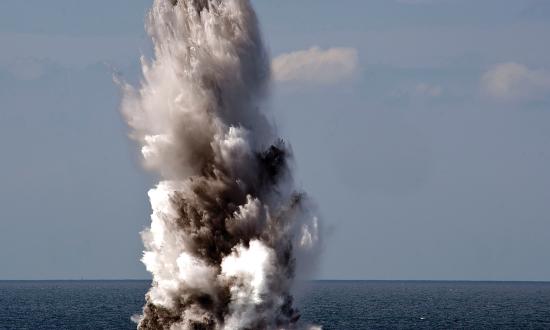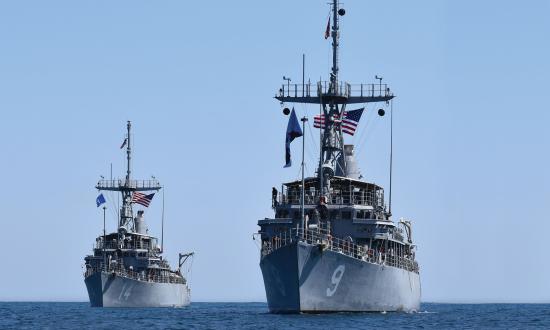“The times, they are a-changing.” That famous lines from Bob Dylan’s 1964 hit song symbolized a shift in the countercultural era. As surely as this became an anthem for millions who recognized the winds of change, naval mine warfare needs to heed the call.
Mine warfare spans more than 200 hundred years of history, ever since the very first floating barrels of gun powder were used as offensive mines in 1777 during the Revolutionary War. Since the end of World War II, mine warfare has waxed and waned as other warfighting priorities have taken precedence, being all but forgotten in times of peace. But being unprepared can cripple an offensive operation, potentially delaying strategic actions, as seen during the Korean War at the Battle of Wonsan, in which an ill-prepared U.S. Navy was unable to quickly respond to the enemy’s use of mines.1
Mine Warfare Today
Today’s post-Cold War mind-set has left the Navy with aging mine countermeasures (MCM) assets that comprise the service’s entire mine warfare force. The mine warfare force sits, eagerly awaiting the promise of salvation being heralded by the littoral combat ship (LCS) and futuristic autonomous, unmanned vehicles. But, will these emerging strategies answer the need? Or does the service need a new approach to meet the demands of 21st-century naval mine warfare? Will the Navy examine its current mine warfare construct, address the problems with the plan for replacing aging MCM systems, and offer a better solution moving forward?
The current mine warfare construct is a robust strategy that uses offensive and defensive elements. However, the Navy’s overwhelming focus revolves around the latter: defensive mine warfare, or mine countermeasures. The MCM construct is comprised of air MCM (AMCM), surface MCM (SMCM), and expeditionary MCM (XMCM), the latter referring to the use of assets such as explosive ordnance disposal. These three pillars work in unison to combat today’s mine warfare threats. The primary pillar rests on the SMCM community, which is comprised of the MCM-1 Avenger-class minesweeper. Although a tried-and-true platform, this aged hull with antiquated equipment has been in dire need of a suitable replacement. However, of the original 14 commissioned, only eight remain in service: four stationed in Bahrain, and four in Sasebo, Japan. Instead of being replaced by the LCS years ago as promised, these final eight ships have been extended yet again far beyond their initial life expectancy, and are expected to remain in use through the end of the decade.
Albeit an aged platform, what does the Avenger class bring to the fight? It stills deliver first-rate mine-hunting and mine-sweeping capabilities with the SQQ-32 sonar as well as the mine neutralization vehicle (MNV), which can find and disable enemy mines. But, its equipment is well behind the times. There is a saying in the minesweeper community: “Wooden ships, iron men!” And while the bravery and work ethic of these men and women of steely nerves and iron resolve is unquestioned, the “224 feet of fightin’ Douglas fir” Avenger-class minesweeper will need a contemporary and just-as-lethal replacement in the coming decade to meet the increased demand for sustainable MCM capabilities around the world.
The Navy’s current plan for SMCM replacements is still the LCS. Composed of the Freedom and Independence variants, the LCS program has been in the works for decades and has yet to deliver a suitable MCM replacement. Challenges arise from its concept of design. Promised to have a multimission, modular design, with a swap-in/swap-out mission package concept, the LCS has hit multiple roadblocks. Not only was the LCS built to replace the Avenger-class minesweeper, but also the Oliver Hazard Perry–class frigate and intended to fill the roles of both its predecessors in surface, antisubmarine, and mine warfare. Although it is a paltry frigate replacement, the LCS’s failure to deliver an efficient MCM mission package is even worse, and has cost the Navy valuable time in procuring a suitable MCM replacement platform. Not only has the LCS failed to deliver on its promise to be viable MCM asset, it also is very expensive to produce compared with its Avenger-class predecessor. The LCS costs around $600 million per ship, while an Avenger-class minesweeper is roughly $274 million. Clearly, the answer lies elsewhere.
The Future of Mine Warfare
How can the Navy boldly advance into the 21st-century future of naval mine warfare? The solution can only be found in a shift in the concept and culture of mine warfare. No longer can the Navy marginalize this often neglected warfare area, leaving it with minimal funding, training, and manning. Instead, the service must give this warfare area the attention it deserves.
First, the Navy must procure a new SMCM platform. As evident from the failures of the LCS and its mine warfare mission package, the replacement must be created and designed specifically for mine warfare. The risk is too great to leave the safety of the nation’s mine countermeasures defenses to untested or faulty designs. The new ship class also would allow the introduction of new internal navigation equipment, mine-hunting sonars, and neutralization vehicles, something desperately needed to help the Navy stay on par with its allies and near-peer competitors. In addition, the new SMCM ship should be smaller in length, breadth, and displacement and use more cost-effective materials, similar to a design used by Japan. The Japanese Maritime Self-Defense Force (JMSDF) Navy’s newest minesweeper, the Awaji class, boasts a unit production price of a mere $118 million, nearly a quarter of the cost of an LCS. It includes modern equipment and systems, compared with the three-decade-old equipment on Avenger-class minesweepers. This allows the JMSDF to produce large numbers of high-caliber SMCM assets at a quarter the price of a U.S. Navy LCS, which has yet to be proven effective at mine warfare.
In addition to a manned MCM ship, autonomous, unmanned systems are vital to the evolution of naval mine warfare. They can do tremendous things, such as clearing large areas with no risk to personnel, but they must be coupled with a manned MCM ship until unmanned capabilities and effectiveness have been measured.
Most of all, the Navy must integrate its future systems into its current training models at the tactical, operational, and strategic levels. The service often delivers a weapon system without the necessary training, or a training system is put in place that is incompatible with available equipment or technology. Implementing integrated MCM training for enlisted mineman, officers, MCM squadrons, and staff will be effective and increase lethality.
The naval warfare times are changing. Success in naval mine warfare can no longer be left to luck or tradition, but must be advanced through a holistic, integrated, and phased approach using tested concepts with new technologies. The motto of the USS Patriot (MCM-7) is “Audentes Fortuna Juvat,” which means “Fortune favors the brave.” That is the approach the Navy must take when attacking the problems of mine warfare in the 21st century. It will take might and mettle, but the Navy can enter the era of U.S. supremacy in naval mine warfare if it embraces change.
1. George W. Bear, One Hundred Years of Sea Power: The U.S. Navy, 1890–1990 (Palo Alto, CA: Stanford University Press, 1994).






